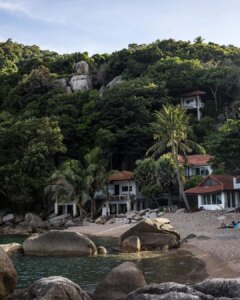Across the eight-square-mile island of steep, mostly undeveloped hills and stunning aquamarine bays that make up the island of Koh Tao, Thailand, there are no traffic lights, no international five-star resorts; building height is capped well below the tops of coconut palms, and jet skis are not allowed.
The island is typically the end of a circuit for travelers who unwind at the beaches and restaurants of Koh Samui, then head to Koh Phangan for the full moon party or a meditation retreat, then cruise over to Koh Tao for diving and snorkeling.

📷 by @jackwyntaylor
But visitors to Koh Tao these days are met by a banner proclaiming a new tourist fee — 20 baht, or about 55 cents, the price of a can of soda — in Thai and English stating that it is for “port management, waste management and the conservation of the environment, nature and biodiversity on Koh Tao.” The user fee was part of a rethink during the pandemic about the toll tourism was taking on the island`s marquee attractions — from snorkelers trampling on coral to boats spewing oil in the sea to erosion from construction. The pause also led to regular beach and underwater cleanups by community and diving groups, as well as new coral restoration projects around Koh Tao.
“The nature brings the customers,” said Vie Boursmui, a diving instructor, as groups of divers from Britain, the Netherlands, Australia, Israel and Spain filled the tables at Ban`s Diving Resort for a post-scuba sunset drink. “So we have to protect nature.”
